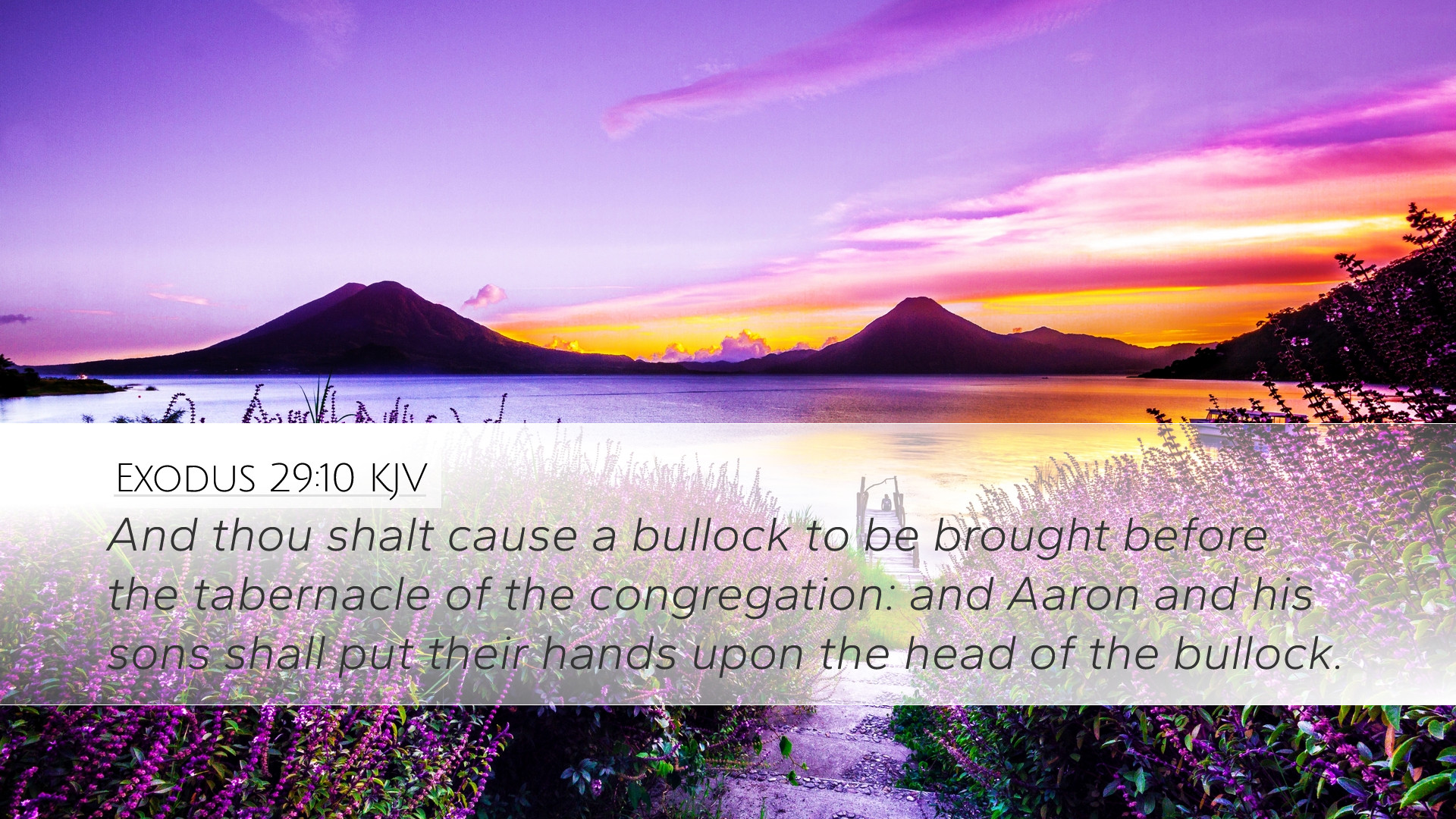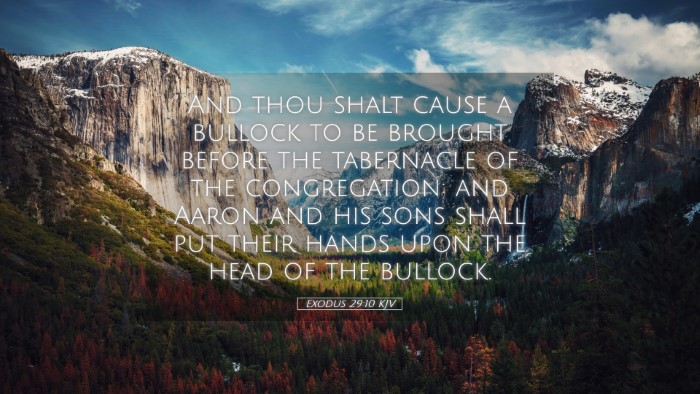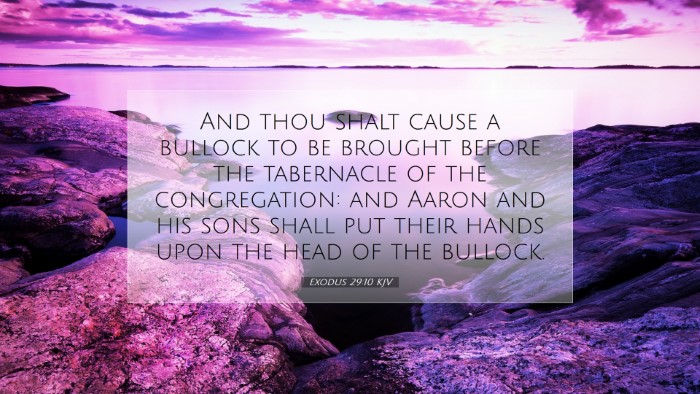Commentary on Exodus 29:10
Verse: Exodus 29:10 - "And thou shalt cause a bullock to be brought before the tabernacle of the congregation: and Aaron and his sons shall put their hands upon the head of the bullock."
Introduction
The instruction given in Exodus 29:10 is part of the larger sacrificial framework established by God for the consecration of Aaron and his sons as priests. This verse highlights the significance of sacrifices in the worship and the covenant relationship between God and His people. The act of laying hands upon the sacrificial animal symbolizes identification and acceptance, marking a critical moment in the sacrificial system.
Contextual Background
In the preceding chapters of Exodus, God commands Moses to create a priesthood for His people. The instructions provided encompass the meticulous details of their anointing, duties, and offerings, with Chapter 29 focusing specifically on the consecration rites. The bullock, or young bull, represents both the gravity of sin and the means for atonement, underscoring the sacred duty of the priests.
Significance of the Bullock
Matthew Henry's Commentary: Henry emphasizes that the bullock signifies the seriousness of the priestly role and the need for atonement. The blood of the bull symbolizes cleansing and covenant, connecting the physical act of sacrifice to spiritual implications.
Albert Barnes' Notes: Barnes notes that the bullock's presence indicates a communal act, representing the people's collective need for atonement. It serves as a proxy for the sins of the priests, reinforcing the teaching that the priest's role includes intercession and representation before God.
Symbolism of Laying on Hands
The act of placing hands on the bullock is highly symbolic and serves multiple purposes:
- Transference of Sin: The priests identify with the offering and transfer their sins to the bullock, marking the beginning of the atonement process.
- Acceptance of God’s Leadership: This act signifies submission to God's authority and the acceptance of their divinely appointed roles.
- Consecration: Through this ritual, Aaron and his sons are symbolically set apart for sacred service.
Theological Implications
This passage not only reveals God's establishment of priestly mediation but also foreshadows larger theological themes prevalent throughout Scripture.
Foreshadowing Christ
Adam Clarke's Commentary: Clarke draws attention to how this ritual points to the ultimate sacrifice of Jesus Christ. Just as the bullock bore the sins of the priests, Christ, the Lamb of God, takes upon Himself the sins of the world. This connection is crucial for understanding the New Testament's portrayal of Jesus as the Great High Priest.
Role of Intercession
The priests are called to intercede for the people, a role that involves both representation and advocacy before God.
- Pastoral Application: Modern-day pastors and theologians can learn from the priestly model of intercession, emphasizing prayer as central to pastoral care and community leadership.
- Students of Theology: Understanding the intercession role enriches the conceptual framework of the priesthood of all believers, highlighting the call for every Christian to be a mediator in prayer.
Practical Applications
As we reflect on Exodus 29:10, several practical applications emerge for today's believers:
- Understanding Sacrificial Atonement: Emphasizing the severity of sin while celebrating the grace of God in the provision for atonement.
- Embracing Our Roles: A call to recognize one's priestly role in serving and interceding for others within the community.
- Dependency on Divine Authority: A reminder to submit to God's plan and authority in all areas of life, reflecting the community’s dependence on divine guidance.
Conclusion
Exodus 29:10 encapsulates profound themes concerning atonement, intercession, and the call to priestly service. By examining the sacrificial system and its reflection in the person of Jesus Christ, the significance of these ancient practices can be meaningfully applied to modern faith and communal life. The insights from influential commentaries provide a comprehensive understanding that encourages deeper reflection and application among pastors, students, theologians, and Bible scholars alike.


